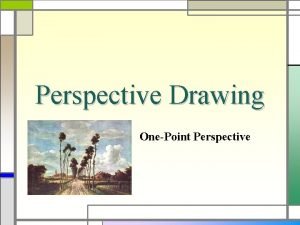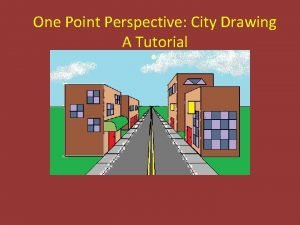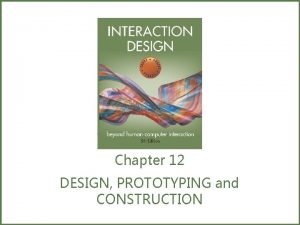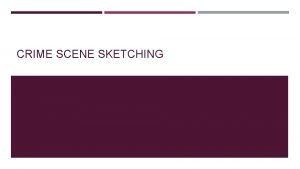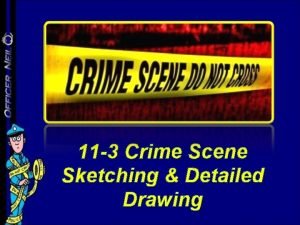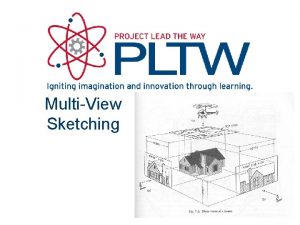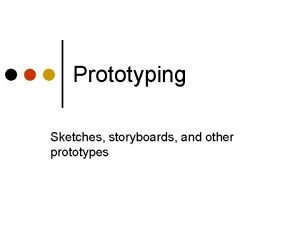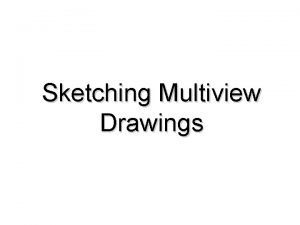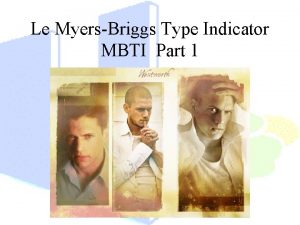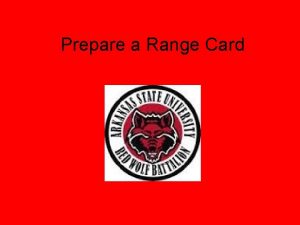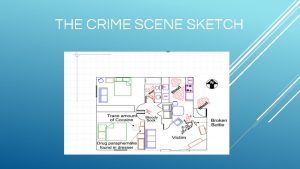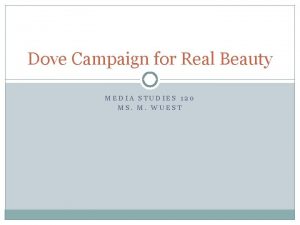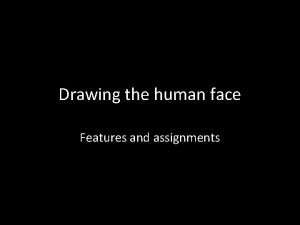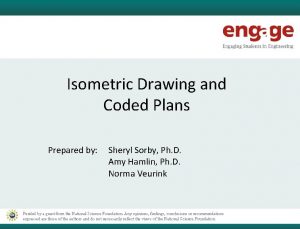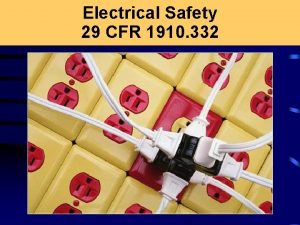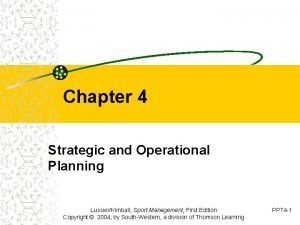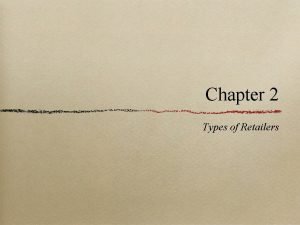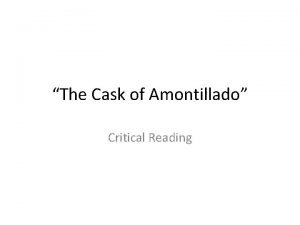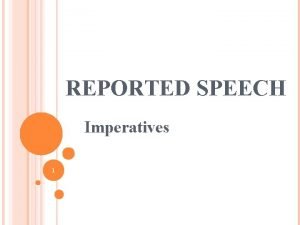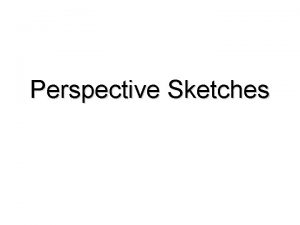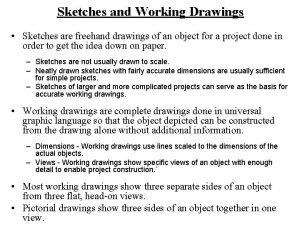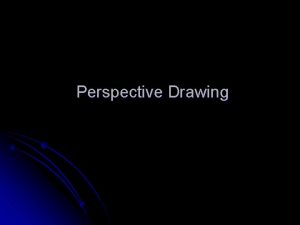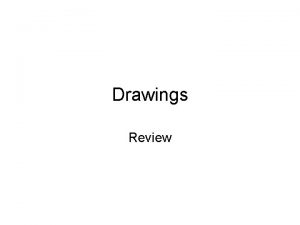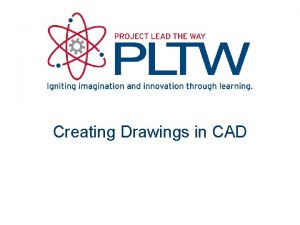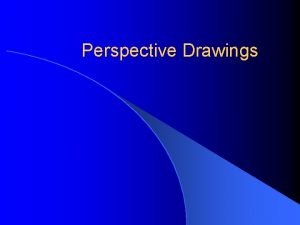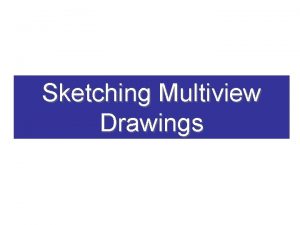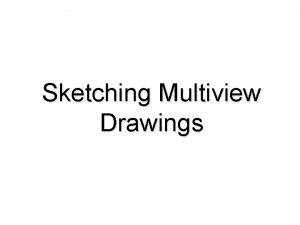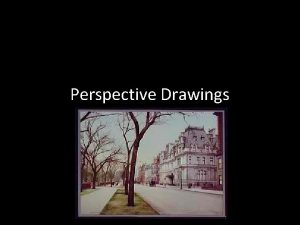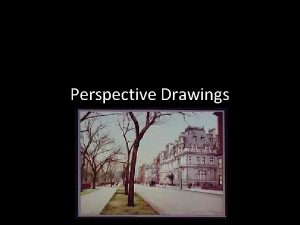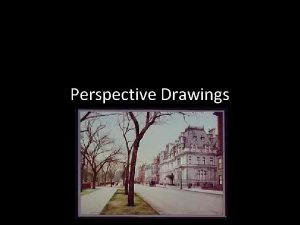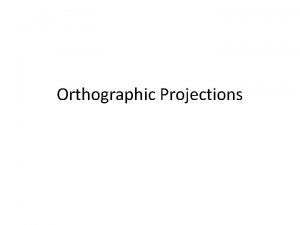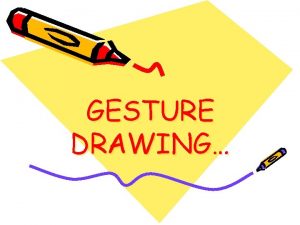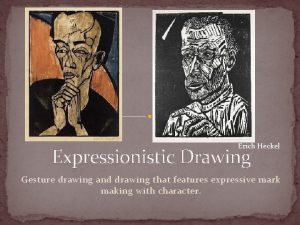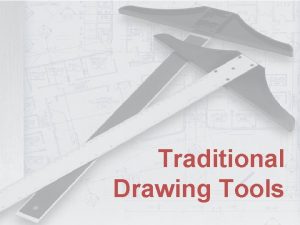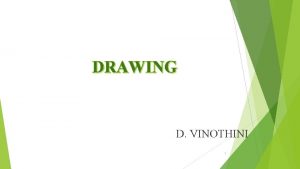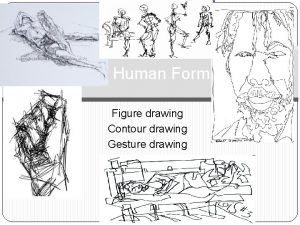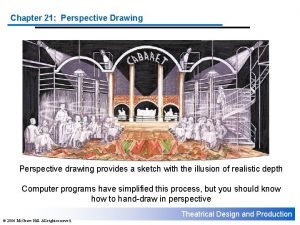Perspective Sketches Perspective Drawings A perspective drawing offers



























- Slides: 27


Perspective Sketches

Perspective Drawings A perspective drawing offers the most realistic three-dimensional view of all the pictorial methods, because it portrays the object in a manner that is most similar to how the human eye perceives the visual world.

Perspective Drawings 1 -Point 2 -Point 3 -Point

One-Point Perspective The one-point perspective is relatively simple to make, but is somewhat awkward in appearance when compared to other types of pictorials. A horizontal line, representing the horizon, is drawn across the upper portion of the paper. One vanishing point is identified somewhere on the horizon line.

One-Point Perspective A horizontal line, representing the horizon, is drawn across the upper portion of the paper. One vanishing point is identified somewhere on the horizon line. A series of lines are drawn from distinctive points outlining the object being constructed. The end result looks like the next slide.


Two-Point Perspective The two-point perspective is the most common perspective drawing. A step-by-step procedure will be explained for the perspective.

Two-Point Perspective 1. A horizontal line, representing the horizon, is drawn across the upper portion of the paper. Two vanishing points are then identified, one on either end of the horizon line.

Two-Point Perspective 2 nd Method

Two-Point Perspective 1. A horizontal line, representing the horizon, is drawn across the upper portion of the paper. Two vanishing points are then identified, one on either end of the horizon line. 2. A vertical construction line is drawn, which represents the overall height of the object. Two points are marked on this line, which represent a top and bottom corner of “the box” within which the object will be sketched.

Two-Point Perspective 2 nd Method

Two-Point Perspective 3. Two construction lines are drawn from each point to the vanishing points on the horizon line.

Two-Point Perspective 2 nd Method

Two-Point Perspective 4. Points and vertical construction lines are drawn to represent the overall width and depth of the object. Their locations must be estimated to make the overall dimensions of “the box” appear proportional. Once properly located, construction lines are drawn from the top points to the vanishing points on the horizon line.

Two-Point Perspective 2 nd Method

Two-Point Perspective 5. Points and construction lines are used to identify the corners of the object that occur on the visible surfaces of “the box. ”

Two-Point Perspective 2 nd Method

Two-Point Perspective 6. Depending on the complexity of the part, it may be advantageous to trace over the visible edges with object lines before the drawing becomes cluttered with points and construction lines.

Two-Point Perspective 2 nd Method

Two-Point Perspective 7. Points and construction lines are used to identify the corners of the object that occur inside “the box. ”

Two-Point Perspective 2 nd Method

Two-Point Perspective 8. Object lines are then drawn over the construction lines to delineate the visible edges of the part.

Two-Point Perspective 2 nd Method

Three-Point Perspective The three-point perspective gives the viewer either a worm’s eye, or bird’s eye view of an object.

Three-Point Perspective This is set up similar to the twopoint perspective; however, a third vanishing point is identified near the bottom of the construction line. The end result looks like the next slide.

 Onepoint perspective
Onepoint perspective City street drawing easy
City street drawing easy Card-based paper prototypes, sketches and storyboards are
Card-based paper prototypes, sketches and storyboards are Thumbnail sketch definition art
Thumbnail sketch definition art What should a crime scene sketch include
What should a crime scene sketch include Advantages and disadvantages of forensic photography
Advantages and disadvantages of forensic photography Multi-view sketch
Multi-view sketch Card-based paper prototypes, sketches and storyboards are
Card-based paper prototypes, sketches and storyboards are Isometric pictorial
Isometric pictorial How to draw a multiview sketch
How to draw a multiview sketch Isometric drawing from orthographic view
Isometric drawing from orthographic view Bambi mbti
Bambi mbti Army range card
Army range card What must be included on a crime scene sketch?
What must be included on a crime scene sketch? Dove real beauty sketches campaign case study solution
Dove real beauty sketches campaign case study solution Human face drawing
Human face drawing Isometric sketches
Isometric sketches Sketching crime scene
Sketching crime scene 29 cfr 1910
29 cfr 1910 I stand all amazed at the love jesus offers me
I stand all amazed at the love jesus offers me How an organization offers unique customer value
How an organization offers unique customer value He-y come on ou-t by shinichi hoshi
He-y come on ou-t by shinichi hoshi Universal library offers
Universal library offers Xmpp offers extensibility to mcq
Xmpp offers extensibility to mcq Absa bond repayment holiday
Absa bond repayment holiday Variety and assortment in retail
Variety and assortment in retail When montresor offers the medoc wine to fortunato
When montresor offers the medoc wine to fortunato Imperatives reported speech
Imperatives reported speech
